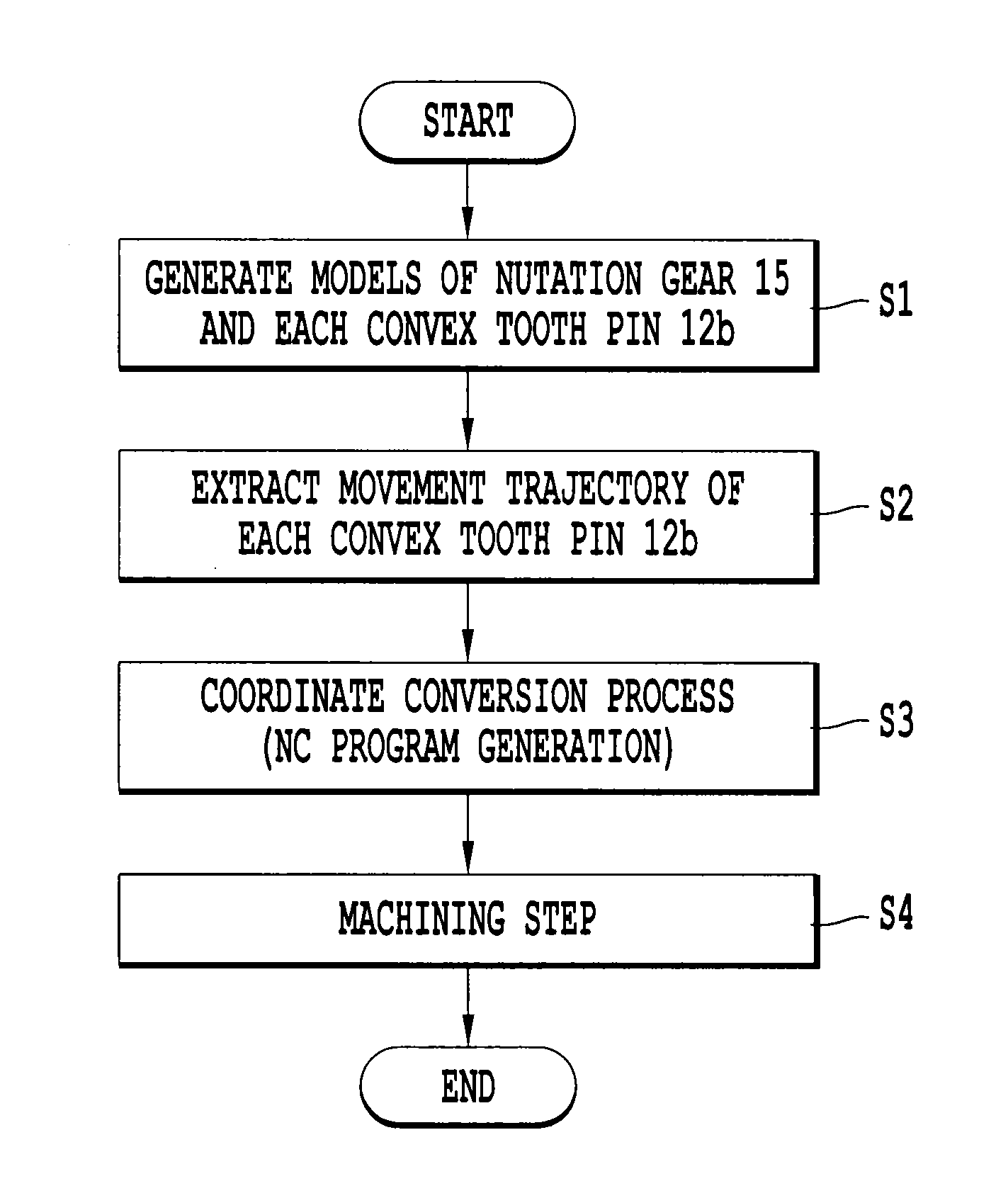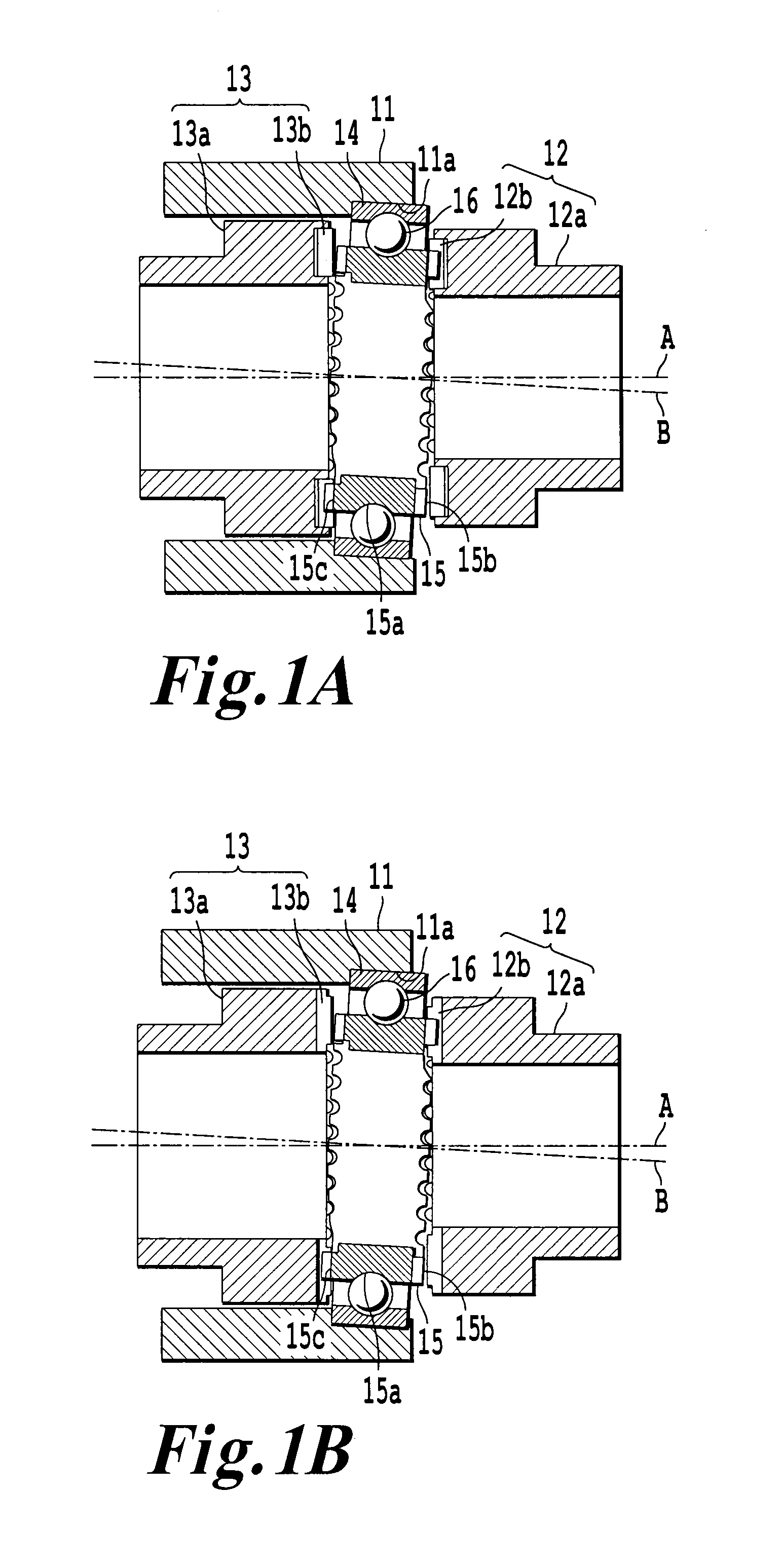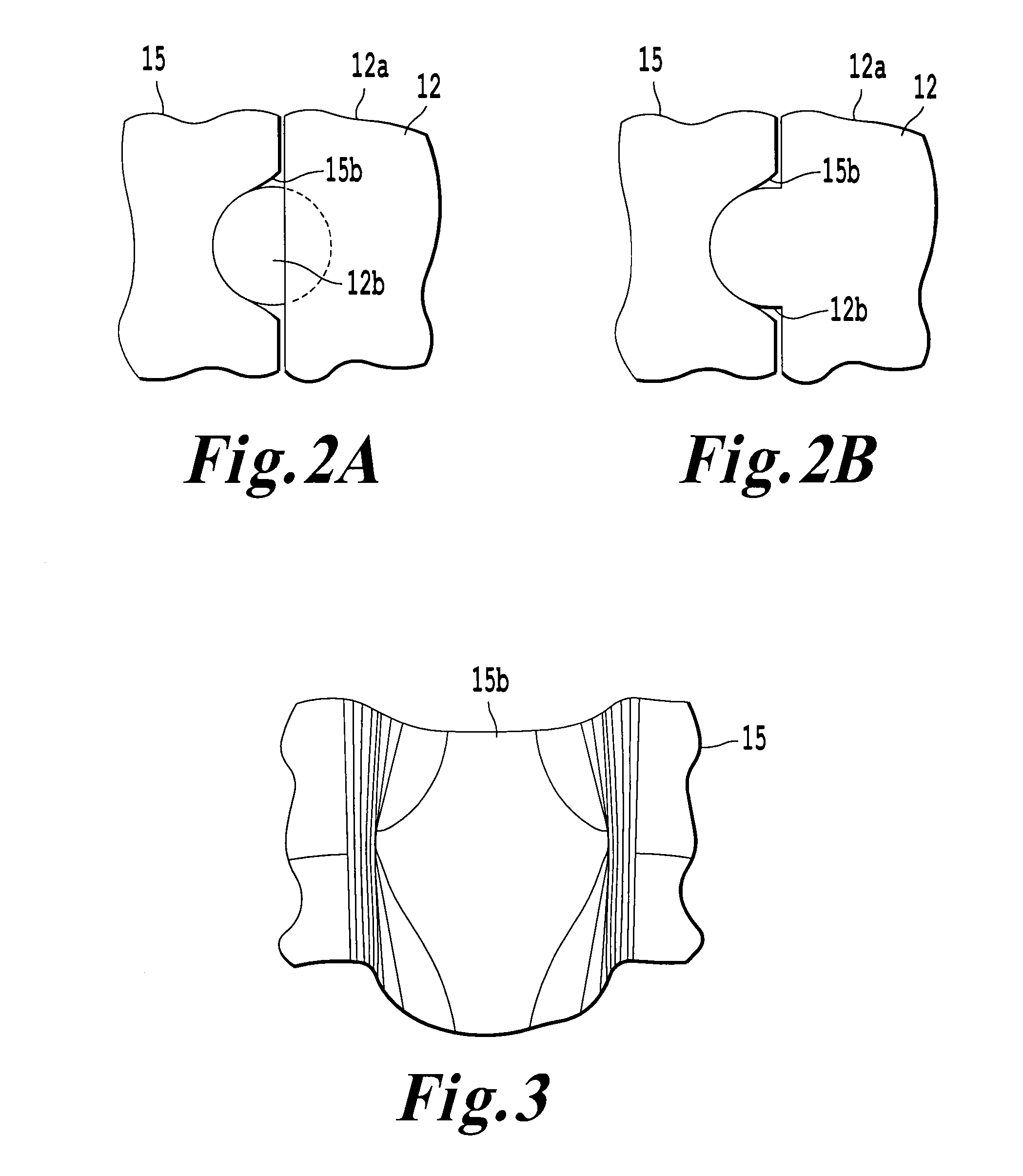Processing method and processing device for concave-convex gear
a processing method and concave-convex gear technology, applied in the direction of gear teeth, manufacturing tools, gear grinding, etc., can solve the problem of difficult machining, achieve the effect of reducing size, improving the meshing rate of mating gear and concave-convex gear, and easy machine the concave teeth
- Summary
- Abstract
- Description
- Claims
- Application Information
AI Technical Summary
Benefits of technology
Problems solved by technology
Method used
Image
Examples
first embodiment
[0103]Six-Axis Configuration (Three Linear Axes and Three Rotation Axes)
[0104]A machining method and machining device for a nutation gear of a nutation gear set according to a first embodiment will be described with reference to FIG. 1 to FIG. 10. The machining device in the present embodiment shows the case of a six-axis configuration having three orthogonal linear axes and three rotation axes.
[0105](1) Configuration of Nutation Gear Set
[0106]The configuration of the nutation gear set that uses the nutation gear that is a machining object of the invention will be described with reference to FIG. 1 to FIG. 4. Here, FIG. 1(a) shows a case where convex tooth pins 12b and 13b are respectively separately formed from a fixed shaft body 12a and an output shaft body 13a, and FIG. 1(b) shows a case where the convex tooth pins 12b and 13b are respectively integrally formed with the fixed shaft body 12a and the output shaft body 13a. Note that, hereinafter, description will be made mainly wit...
second embodiment
Five-Axis Configuration (Three Linear Axes and Two Rotation Axes) (First Example of Omission of Fourth Rotation Axis)
[0151]A machining method and machining device for a nutation gear of a nutation gear set according to a second embodiment will be described with reference to FIG. 11. The machining device in the present embodiment shows the case of a five-axis configuration having three orthogonal linear axes and two rotation axes. The fourth rotation axis in the first embodiment is omitted. Specifically, movement along the fourth rotation axis described in the first embodiment is decomposed into movement along the sixth indexing axis and movement along the third linear axis.
[0152]Here, in the present embodiment, “model generation” (S1) and “trajectory extracting step” (S2) in the first embodiment are the same. That is, the movement trajectory of the convex tooth pin 12b, extracted in the trajectory extracting step, is expressed by the three linear axes and the three rotation axes.
[01...
third embodiment
Five-Axis Configuration (Three Linear Axes and Two Rotation Axes) (Second Example of Omission of Fourth Rotation Axis)
[0157]A machining method and machining device for a nutation gear of a nutation gear set according to a third embodiment will be described with reference to FIG. 12. The machining device in the present embodiment shows the case of a five-axis configuration having three orthogonal linear axes and two rotation axes. The fourth rotation axis in the first embodiment is omitted. Specifically, movement along the fourth rotation axis described in the first embodiment is decomposed into movement along the sixth indexing axis and movement along the second linear axis.
[0158]Here, in the present embodiment, “three-dimensional CAD model generation” (S1) and “trajectory extracting step” (S2) in the first embodiment are the same. That is, the movement trajectory of the convex tooth pin 12b, extracted in the trajectory extracting step, is expressed by the three linear axes and the...
PUM
| Property | Measurement | Unit |
|---|---|---|
| cone angle | aaaaa | aaaaa |
| cone angle | aaaaa | aaaaa |
| torque | aaaaa | aaaaa |
Abstract
Description
Claims
Application Information
 Login to View More
Login to View More - R&D
- Intellectual Property
- Life Sciences
- Materials
- Tech Scout
- Unparalleled Data Quality
- Higher Quality Content
- 60% Fewer Hallucinations
Browse by: Latest US Patents, China's latest patents, Technical Efficacy Thesaurus, Application Domain, Technology Topic, Popular Technical Reports.
© 2025 PatSnap. All rights reserved.Legal|Privacy policy|Modern Slavery Act Transparency Statement|Sitemap|About US| Contact US: help@patsnap.com



